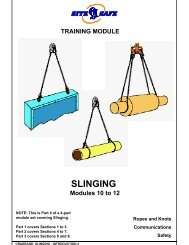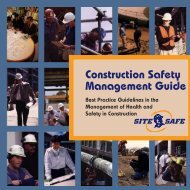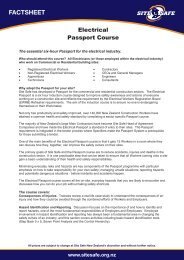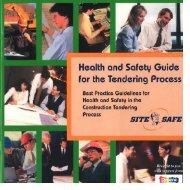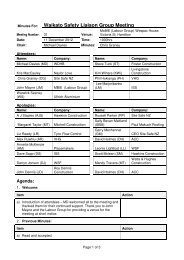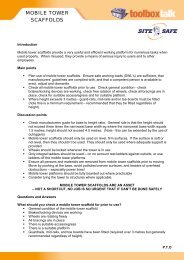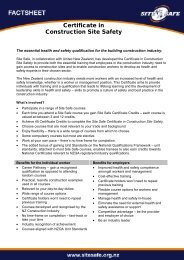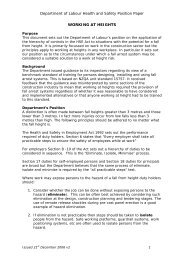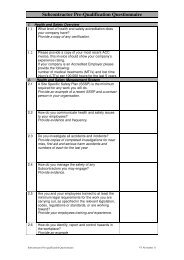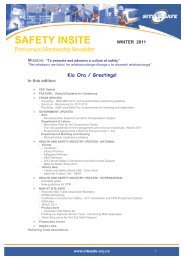Create successful ePaper yourself
Turn your PDF publications into a flip-book with our unique Google optimized e-Paper software.
GOOD SLINGING PRACTICE<br />
BASIC RULES ... 5<br />
5.2. KNOW THE EFFECT OF REEVING ON SLINGS.<br />
When a load is lifted by a pair of equal-length slings, the load in each leg of a sling<br />
increases as the angle between the legs increases.<br />
We then have the seemingly ridiculous situation where the load on a sling can be<br />
many times the actual weight of the load - a frequent cause of sling failure.<br />
1,000 kg<br />
2,000 kg<br />
1,000 kg<br />
1 tonne<br />
Single<br />
leg sling<br />
1,000 kg<br />
1<br />
tonne<br />
2,000 kg<br />
60°<br />
90°<br />
120°<br />
1,155 kg 1,414 kg 2,000 kg 11,470 kg<br />
LOAD ON ANGLED SLINGS<br />
Reeving a sling around a load with one eye (or bight) through the other,<br />
actually halves the safe working load of that sling.<br />
Keep in mind also, that the angle of the sling has already reduced the capacity of the sling.<br />
If it were possible to reeve the sling and keep the nip well above the load, this load would<br />
not be so great, but safety requires the nip to be well down on the load.<br />
1 tonne<br />
Reeved, nip, or<br />
choker sling<br />
Angle<br />
A<br />
Basket or<br />
cradle sling<br />
A sling which is to be reeved around a load needs to have a safe working<br />
load of AT LEAST TWICE that of a sling which would otherwise be used.<br />
2,000 kg<br />
2,000 kg 2,000 kg 2,000 kg 2,000 kg<br />
2,000 kg<br />
0.5<br />
tonne<br />
1 tonne 1 tonne<br />
Bridled<br />
sling<br />
2,000 kg<br />
170°<br />
0.5<br />
tonne<br />
PAGE 11




